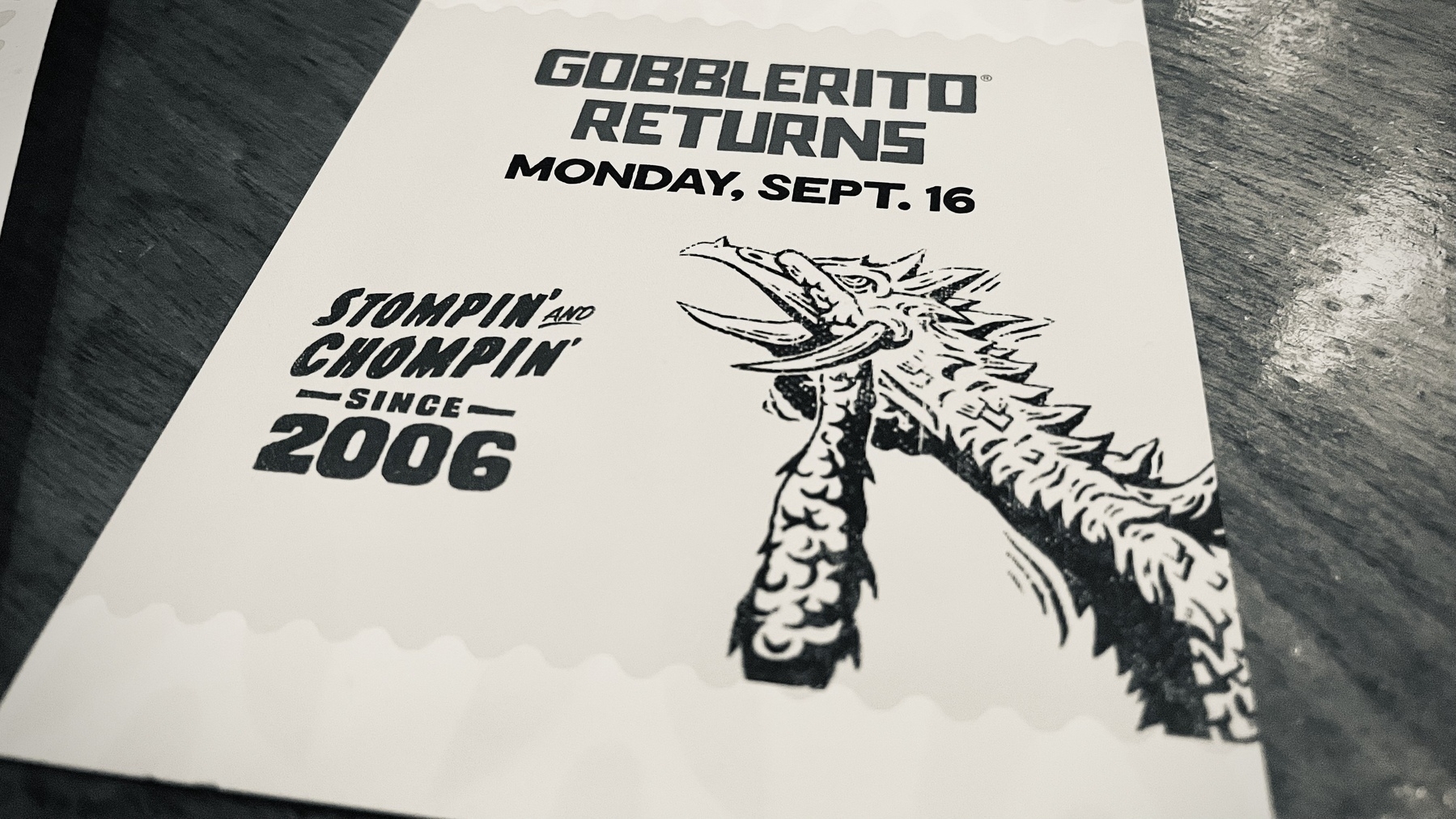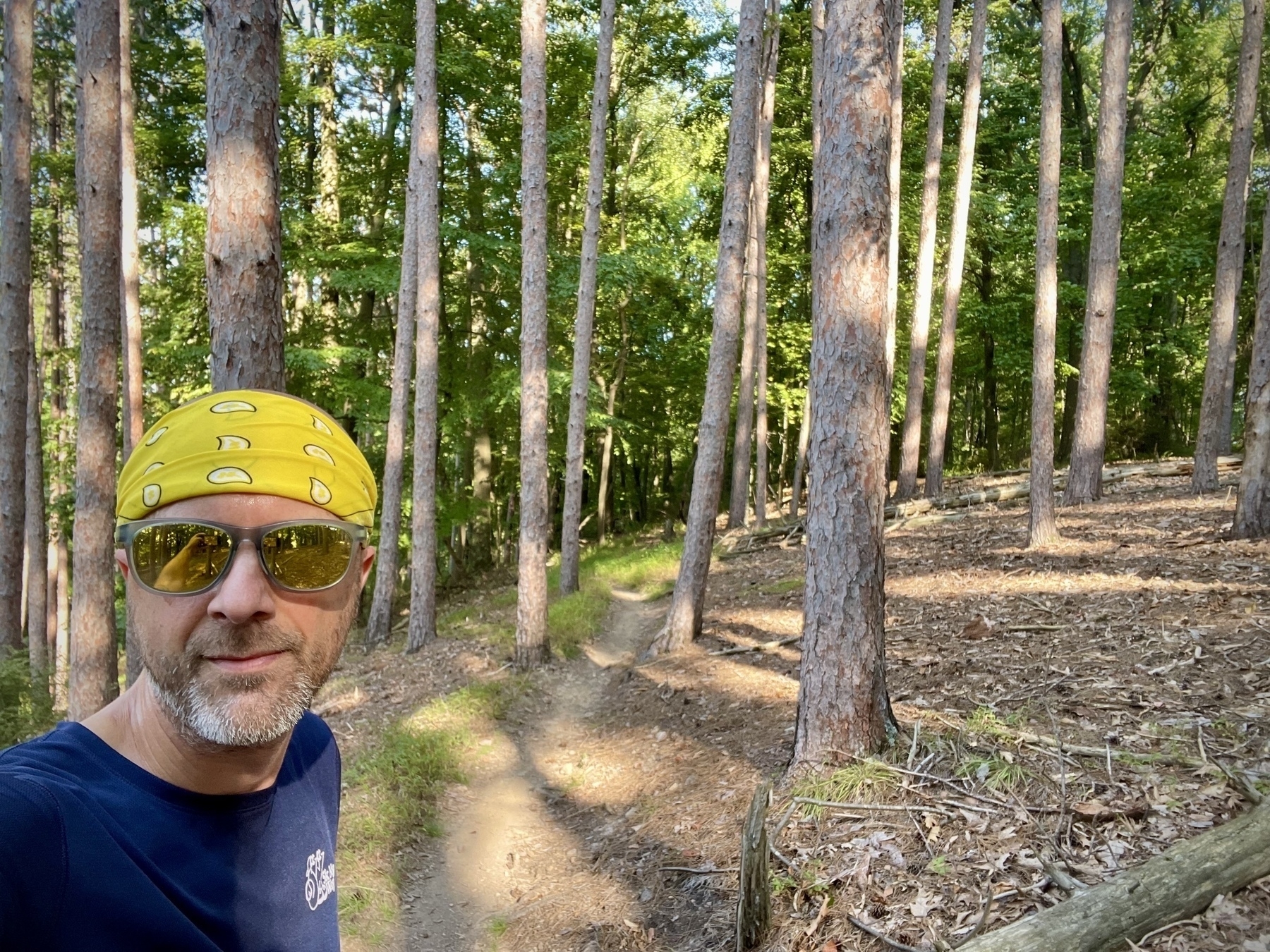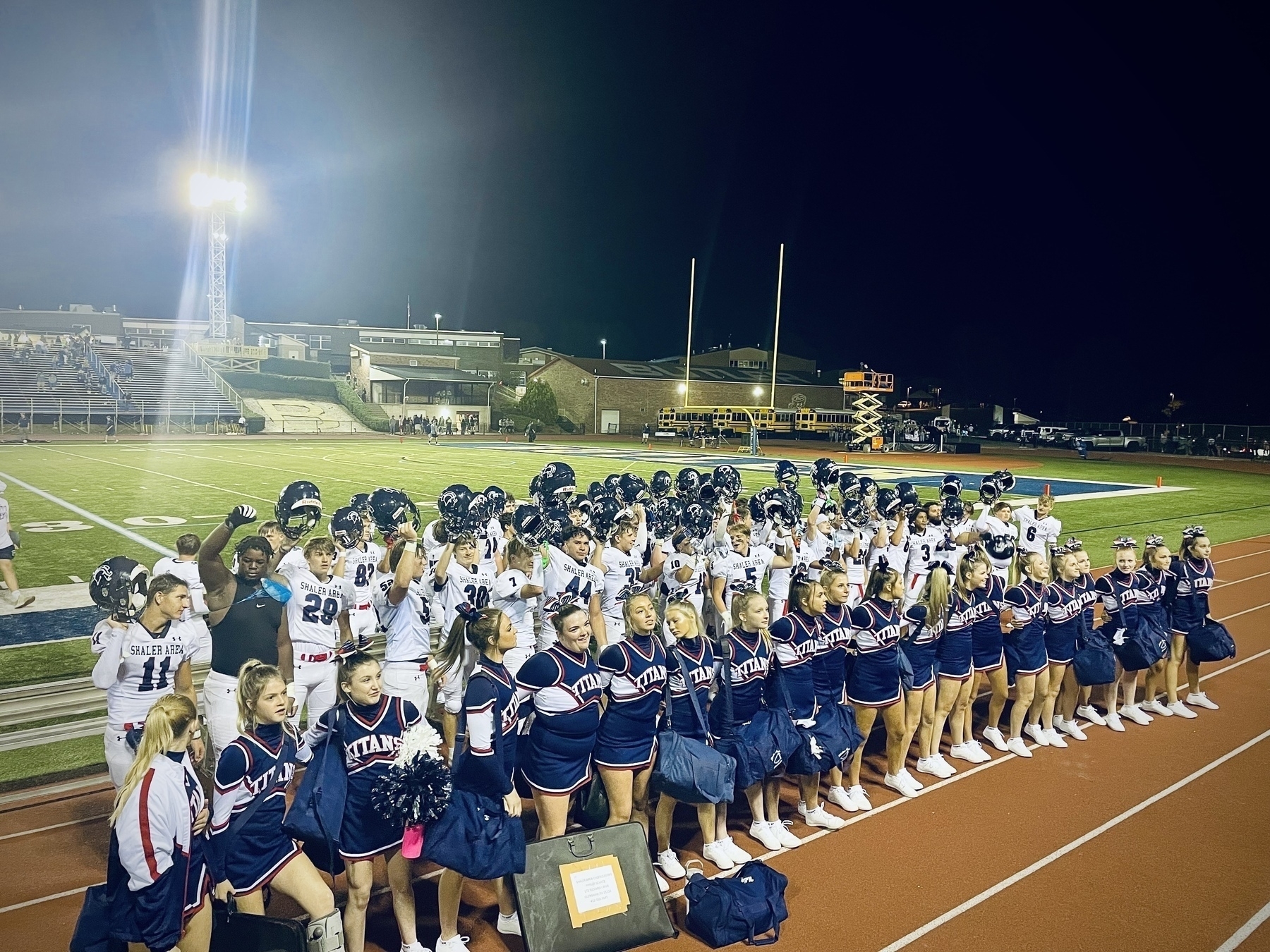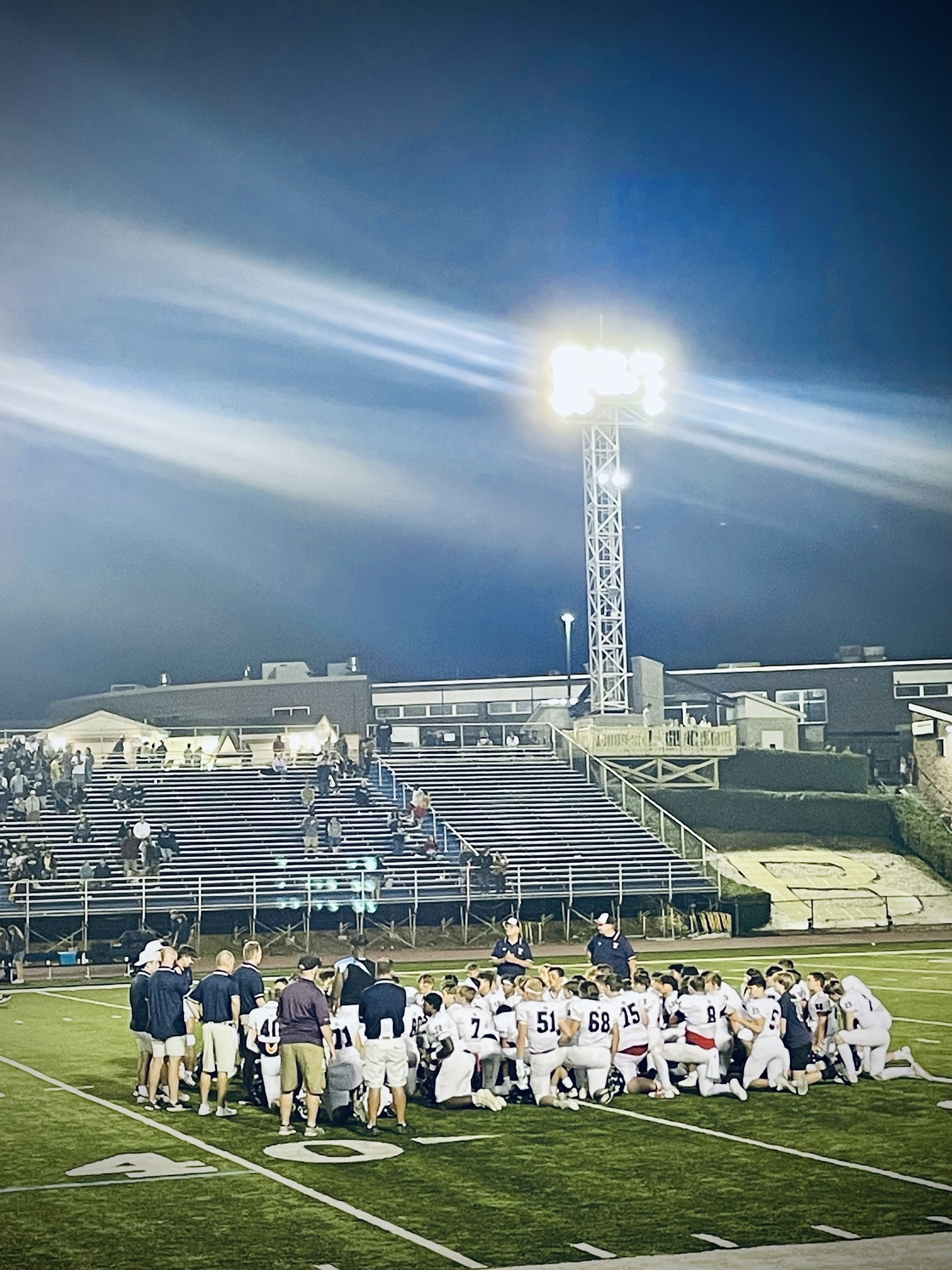A public request to my REI colleagues regarding our next work retreat: Please don’t leave me behind to summit a 14’er solo, only to get lost and then spend the night alone weathering a storm.
Uh oh. The Grand Canyon has had a water main break that is impacting overnight stays this Labor Day weekend:
The Arizona park’s Transcanyon Water Distribution Pipeline is 12½ miles long, providing water to both the North and South Rim, and it’s about 50 years old. It has had 85 major breaks since 2010, park officials said in an earlier news release, adding that it “is beyond its expected useful life, experiences frequent failures, and requires expensive and continuous inner canyon maintenance work to repair leaks.”
(via The Washington Post)
Someone is cruising Pittsburgh’s downtown and North Side neighborhoods to tag fresh piles of dog excrement with political paraphernalia and the Pittsburgh City Paper needs some answers:
I wasn’t expecting to nearly step in bedazzled dog doo on my way to Le Gourmandine. It was a bizarre sight: nearly fresh canine excrement with little flags donning the phrases “TRUMP DUMP” and “Trumpin’ ‘n Dumpin” stuck into the turds with toothpicks and topped with patriotic sprinkles. So many questions.
The Standard asks, “Why does Gen Z have such bad concert etiquette?”
I dunno. What did boomers think of mosh pits in the 90’s? What did Gen X think of the cell phones that popped up at shows in aughts? All of this seems like a bit of generational hand ringing to me. The kids are alright.
The New Slang
Jason Fried making an analogy that companies are like complex languages where new executives sometimes struggle to gain proficiency:
A casual browse through LinkedIn at C-level folks will unearth many short tenures. 2 years. 3 and a half. Sometimes just 1. It’s incredibly hard to become a high-expectation native speaker in such short order. This leads to what I call “churnover” — a high turnover rate driven by the churn of executives struggling to fully integrate into their new corporate language.
It’s an astute observation. I’ve seen this over and over during my time in retail. A new executive comes in, speaks an entirely different language, is unable to gain traction and ultimately leaves for greener pastures in short order.
The great leaders, however, are able to quickly assimilate into the existing culture. They learn and speak the language of the locals, while working to introduce new and effective colloquialisms as they earn trust across the organization.
Death to the Algorithm
As someone who was born on the blurry border between Generation X and the Millennial generation, I remember a time before the internet and I fondly recollect my curiosity surrounding the emerging internet in the late-90s. The infant internet was an extremely strange place. There were very few rules, even fewer boundaries and – as far as I could gather – no limits to the interconnected potential of this new universe.
I wanted to know how it worked, so I too could have a hand in creating the magic of the World Wide Web. I viewed page sources and inspected elements to learn how HTML and CSS fused together to make websites. I started making my own sites and added them to webrings. Remember those?
AOL gave way to Geocities gave way to Blogger gave way to Wordpress, which led to MySpace which led to Twitter. At the dawn of early social media, I felt just as excited about using the web to connect and share with likeminded people who were equally excited about the promise of digital culture. The early days of Twitter felt like the Wild West. Everyone was exploiting the tech for their own needs via open APIs and user-generated features like the hashtag.
The progress in this space in the early- to mid-2000s was a thing of wonder. We started to see its impact on communities, politics, art + culture, and social justice. Social media had become the great democratizer.
And then somewhere along the line money, user data, and algorithms took over.
Reverse chronological timelines morphed into algorithmic feeds labeled ‘For You,’ but the feeds don’t actually show posts from the people you follow. This helped create the attention economy and influencers were born. Shortly after, the 2016 & 2020 elections helped create a toxic level of political polarization, online echo chambers fortified the barriers between those polarized, and misinformation campaigns continue to feed the flames of the burning social stack.
I’m done with all that. Over time I’ve learned that participating in the attention economy negatively impacts my mental and emotional well being and I am making a conscious choice to walk away from it. In support of this decision, I am rethinking how I spend my time online. Connecting and sharing with people is still important to me, but I want to do it in a mindful and responsible way. Here’s how I plan to do this:
- Reinvest in publishing on a personal domain. I’ve written on the web since I was a kid and I really enjoy the act of working through thoughts and then putting those thoughts out into the world to see what comes back. A personal site allows for writing at a deeper level than social media will allow and I maintain control over the final product. This website – built on the Micro.Blog platform and underlying Hugo CMS – will be my home for that moving forward.
- Integrate with the social web. I’ve consolidated my social media use to Mountains.Social, a decentralized instance of Mastodon that caters to outdoors enthusiasts. The people are friendly, the community is vibrant, the culture is healthy and there are no algorithms. I’m enjoying my time there. Check it out if you’re interested, or not. No pressure. All posts here will automatically cross-post there, as well as Bluesky (although I am not really hanging out there very much).
So here’s to hoping I can enjoy a healthy relationship with the internet again. The spirit of the open web was a philosophical pillar for me at one point in my life, and I’m hoping that it will be again. Hello, old friend.
I’ve been in retail technology for a long time, and this is the first time I’ve heard the term Summerween:
For many retailers, the weeks between July 4 and Labor Day have customarily been all about stocking up on lunch boxes, crayons and notebooks for back-to-school shopping. Now, store shelves are just as likely to be filled with cauldrons, candy corn and pumpkins.
I love this photo taken by Cover Three Athletics of my son (playing center, #63 in white) from last Friday’s WPIAL Week 0 matchup between Shaler Area and Butler.
📍 Butler High School, Butler, PA, USA
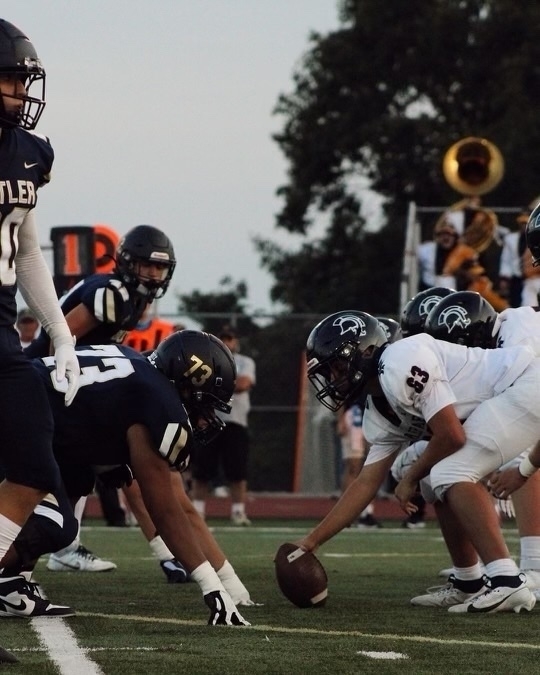
How will Project 2025 impact the things you care about? 25and.me is an innovative website that lets you select areas of interest. Then it breaks down exactly how it will effect those areas, with page number citations. It’s extremely well done and worth a share.
Sylvan Esso has remixed The Postal Service classic The District Sleeps Tonight. It’s a glitchy slice of heaven that does honor to the original, but adds some interesting flavor.
Today’s Indie Media Circus track at XOXO looks🔥. Of particular interest to me is the discussion between Jason Kottke and Craig Mod, two ‘people of the internet’ I greatly admire for their sustainable approach to independent publishing online. The good folx from 404 Media are also on the bill.
The new CEO of Starbucks will be supercommuting three times per week via private jet from his home in Southern California to company headquarters in Seattle. Seems a bit hypocritical for a company that touts its environmental efforts to customers.
Implications and Insights of the Modern Product Leader
I’ve been a subscriber to Implications, a monthly Substack newsletter written by Scott Belsky, for some time now. The issues I’ve read so far have been quite enjoyable, as Belsky provides deep analysis that explores what we might expect to come from rapid advancements in technology, shifts in culture, and the evolution of product design & management.
The latest installment includes a section called Insights from the Modern Product Leader and there are some great thought nuggets for product managers to consider as we work on our individual practices.
On the topic of resources versus resourcefulness, and the nuances that exist between them, Belsky writes:
I like to say, if resources are carbs that you can throw at your problems, resourcefulness is muscle that has far longer lasting power and is worth building (despite the pain of doing so).
This is great context for approaching resourcefulness with a growth mindset. It’s something the triad of my product team works on consciously and regularly. Building that muscle is important to ensure our resiliency through ongoing organizational change.
And on product vision, he proposes a thoughtful triad of considerations:
Clarity In Product Strategy: Does every product have a flag planted and a roadmap for how to get there? We should always have a 3-year vision coupled with an annual plan, and your teams should be aligned around what this is throughout your organizations.
Great product teams have a clear strategy and are able to articulate the path to achieve it. Great organizations position product teams to ladder their product strategies up to a broader set of strategic objectives for the company._
Steward The Narrative for Your Segment or Function: The narrative of why your work matters and how your strategy impacts customers is yours to write, share, and iterate.
The internal PR for a product is often overlooked by teams because they are largely, and rightly, focused on executing the work. Telling the story of the work – the impact it will create, the benefits it will provide and the process used to deliver – is an important piece to a product team’s success, and can lend weight to the resiliency efforts outlined above.
Optimistic About Future, Pessimistic About Present: Do you lead with a balance of excitement and vision for the future of a segment/function — and willingness to take big bets — coupled with a pragmatic focus on obstacles and tasks to be done? Are you direct with what is going right and what is going wrong?
This is great. Balance is vital. Great product leaders are simultaneously able to understand long-term goals, but are also realists about current state. They can see either the stepping stones of incrementality and/or the seismic shifts they need to force in order to get to the objectives, and they have the wisdom, empathy, and creativity to understand when to employ each.
Legendary punk photographer Jim Saah will give a talk tomorrow (8/22) at The Government Center in Pittsburgh. The talk will be followed by a performance from J. Robbins of Jawbox. Looks like an awesome event.
